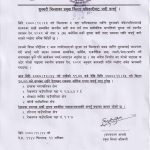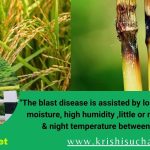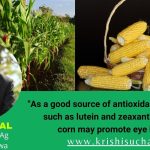WHEAT: CHEMICAL COMPOSITION, USES AND SIDE EFFECTS

Introduction:
Wheat (Triticum aestivum L.),is the most extensively grown cereal crop in the world and belongs to family Poaceae i.e. grass family. It ranks as first crop in the world, which meets most of the protein and calories requirement to the world’s diet. But in context of Nepal, it ranks in third position in terms of cultivated area and production. It occupies 23% of total cereal area and contributes 22.5% of the total cereal production in the country. Wheat is widely adapted with its coverage in all the three agro-climatic regions of the country,ranging from sea level to 4000m asl.
There are 30 total species recognized in the world, but only 3 species are economically important and they are highlighted below:
- T. aestivum/vulgare L.(Bread wheat)
- T. durum L.(Macaroni wheat)
- T. dicuccum L. (Emmer wheat)
Chemical composition of wheat Kernel:
The chemical composition of wheat grain and of its anatomical parts is determined by genetic and ecological factors and by the physical and chemical effects acting on the grain during its storage and processing. The primary quantitative components of wheat is Starch. Apart from starch the grain and especially the grain coat,the aleurone layer and the embryo,contain other carbohydrates such celluloses,hemicelluloses(pentosans),and sugars.Pentosans although their content is low(2-3%) are important owing to their water absorbing capacity i.e. 10 times their mass. The following table gives an overview of different chemical components of whole wheat grain and its different fractions.

Grain:
- The typical wheat kernel is from 3-10 mm length and from 3-5mm in diameter.
- The germ provide nourishment for the seed and contains vitamin B,vitamin E,minerals, antioxidants and fats.
- The bran protects the seed and rich in fibre,vitamin B, minerals.
- The starchy endosperm provide energy for the seed and contains carbohydrates,protein and some vitamin
Uses:
- Edible products can be manufacture:
Wheat is milled to produce flour which is used to make a variety of products including bread across the world.Wheat contains a protein called gluten which is necessary for the basic structure in forming the dough system for breads,rolls, and baked goods.Many of the foods we consume on a daily basis such as pasta,crackers,flour tortillas ,cookies,cakes, pastries,cereals ,noodles are all made from wheat flour. -
Used as nutritional suppliment:
Young wheatgrass is becoming increasingly popular as nutritional supplement offering vitaminA,B-complex,C,E,I and minerals.These includes selenium,manganese,phosphorus,copper and folate. Wheat protein is rich in niacin and thiamin content. - Health benefits:
Consumption of whole grains may reduce the risk of heart diseases and diabetes.And may lower triglycerides,improve insulin control,help in weight management and slow the build-up of arterial plaque.Whole wheat is rich in fiber and boasts a number of anti oxidants and polynutrients that reduces risk of colon cancer and promotes gut health. Also help in prevention of breast cancer,childhood asthma,etc. -
Animal fodder:
Wheat is used for cattle,poultry, and other livestock feed. And in many countries ,rural houses use wheat straw to thatch their houses as well as mattresses and pillows. - Since 2010,wheat has been substituted for corn and used to produce bioethanol in the UK and U.S.
- Also used for manufacturing plastics and aquaculture feed purposes for both fish and shrimp.
Side effects:
Even though wheat is a staple in most kitchens and have some positive effects, many people are allergic to wheat or the protein gluten which can make the reaction worse. This can lead to eczema,itching, hives, bloating, weight loss,vomiting, troubled bowel and rashes.Wheat is also high in oxalates and too much oxalates in blood can leads to problem like kidney stones, gallstones and gout.
Writer: Samiksha Rayamajhi (Student, Bsc. Ag IAAS Paklihawa Campus)

 एउटा यस्तो विषालु भ्यागुता, जसको मुल्य नै पर्छ ३ लाख, जान्नुहाेस्
एउटा यस्तो विषालु भ्यागुता, जसको मुल्य नै पर्छ ३ लाख, जान्नुहाेस्  भोलि र पर्सि बालबालिकालाई भिटामिन ए खुवाइदै
भोलि र पर्सि बालबालिकालाई भिटामिन ए खुवाइदै  खगराज अधिकारी गण्डकीको मुख्यमन्त्री नियुक्त
खगराज अधिकारी गण्डकीको मुख्यमन्त्री नियुक्त  सुनसरीमा दुवै पक्षबीच सहमति, कर्फ्यु खुकुलो हुदै
सुनसरीमा दुवै पक्षबीच सहमति, कर्फ्यु खुकुलो हुदै  स्टेफेनको शतकमा आयरल्याण्ड वोल्भ्सले नेपाल ए लाई दियो २८५ रनको लक्ष्य
स्टेफेनको शतकमा आयरल्याण्ड वोल्भ्सले नेपाल ए लाई दियो २८५ रनको लक्ष्य 


